Midnight Snowflake |
|||||||||||||||||||||||||
|
|
|||||||||||||||||||||||||
DROPS jacket with zigzag and star pattern in ”Fabel”, ”Vivaldi” and ”Alpaca”. Size S - XXXL.
DROPS 115-7 |
|||||||||||||||||||||||||
|
PATTERN: See diagram M.1 to M.10. Diagrams show the pattern from RS. All patterns worked in stocking st. KNITTING TIP: When working M.8 make 3 small balls with 2 threads off-white Alpaca and use one ball for each piece, i.e. 1 ball for right front piece, 1 ball for back piece and 1 ball for left front piece = 3 balls (to avoid too long threads on WS and because pattern hasn’t been completed when casting off for sleeves). DECREASING TIP: Make all dec from RS. Beg 3 sts before marker, K2 tog, K2 (marker sits between these 2 sts), slip 1 st as if to K, K1, psso. BUTTONHOLES: Make buttonholes on right front band. 1 buttonhole = K tog 3rd and 4th st from mid front and make 1 YO. Make buttonholes when piece measures (NOTE! all measurements made from bottom point): SIZE S: 8, 16, 24, 32, 40, 48 and 56 cm. SIZE M: 9, 17, 25, 33, 41, 49 and 57 cm. SIZE L: 9, 16, 23, 30, 37, 44, 51 and 58 cm. SIZE XL: 3, 10, 17, 24, 31, 38, 45, 52 and 59 cm. SIZE XXL: 5, 12, 19, 26, 33, 40, 47, 54 and 61 cm. SIZE XXXL: 7, 14, 21, 28, 35, 42, 49, 56 and 63 cm. -------------------------------------------------------- BODY PIECE: Worked back and forth on circular needle from mid front. Cast on 222-222-274-274-274-326 sts (includes 7 front band sts each side towards mid front) on circular needle size 5.5 mm with 2 threads light steel blue Alpaca. K 2 rows on all sts. Change to 1 thread Vivaldi + 1 thread Fabel (= 2 threads) and continue as follows (first row = RS): 7 front band sts in garter st, M.1 (= 26 sts) on the next 208-208-260-260-260-312 sts (= 8-8-10-10-10-12 repeats) and 7 front band sts in garter st. Remember BUTTONHOLES on right front band – see above. REMEMBER THE KNITTING TENSION! Continue like this until piece measures 15 cm from bottom point. Now work M.2 instead of M.1 (i.e. dec 2 sts per repeat) = 206-206-254-254-254-302 sts. After M.2 continue in M.3 instead of M.2. When piece measures 30 cm work M.4 instead of M.3 (i.e. dec 2 sts per repeat) = 190-190-234-234-234-278 sts. Now continue in M.5 instead of M.4. When piece measures 35 cm work M.6 instead of M.5 (i.e. dec 4 sts per repeat) = 158-158-194-194-194-230 sts. After 1 vertical repeat of M.6, K 2 rows with light steel blue Alpaca on all sts. Insert 1 marker after 43-43-52-52-52-61 sts and 1 marker after 115-115-142-142-142-169 sts (= the sides, back piece = 72-72-90-90-90-108 sts). Now measure piece from here. Change to circular needle size 5 mm and continue in stocking st with 1 thread dark blue Alpaca + 1 thread Vivaldi (= 2 threads). AT THE SAME TIME on first row from RS adjust no of sts on back piece to 67-71-79-87-95-107 sts and on each front piece to 41-43-47-51-55-61 sts (= 149-157-173-189-205-229 sts in total). When piece measures approx 2 cm from marker inc 1 st each side of both markers at the sides (= 4 inc) = 153-161-177-193-209-233 sts. When piece measures 3 cm from marker continue as follows (from RS): 7 front band sts in garter st as before, M.7 (= 8 sts) on the next 136-144-160-176-192-216 sts, M.7B (= 3 sts) and 7 front band sts in garter st. Work 1 vertical repeat of M.7 like this. Now continue in stocking st with 1 thread dark blue Alpaca + 1 thread Vivaldi (= 2 threads). When piece measures 7 cm from marker inc 1 st each side of both markers at the sides (= 4 inc) = 157-165-181-197-213-237 sts. When piece measures 8-9-10-11-12-13 cm inc 1 st at the side on each front piece (= 2 inc) = 159-167-183-199-215-239 sts (each front piece = 44-46-50-54-58-64 sts, back piece = 71-75-83-91-99-111 sts). READ ALL OF THE FOLLOWING SECTION BEFORE CONTINUING! Work next row from RS as follows – see KNITTING TIP: SIZE S: 7 front band sts as before, 5 stocking sts, M.8 (= 20 sts), M.8B (= 3 sts) and 9 stocking sts (marker at the side sits here), 7 stocking sts, M.8C (= 17 sts), M.8 on the next 40 sts, 7 stocking sts, (marker at the side sits here), 9 stocking sts, M.8, M.8B, 5 stocking sts and 7 front band sts as before. SIZE M: 7 front band sts as before, 6 stocking sts, M.8 (= 20 sts), M.8B (= 3 sts) and 10 stocking sts (marker at the side sits here), 6 stocking sts, M.8 on the next 60 sts, M.8B, 6 stocking sts, (marker at the side sits here), 10 stocking sts, M.8, M.8B, 6 stocking sts and 7 front band sts as before. SIZE L: 7 front band sts as before, M.8C (= 17 sts), M.8 (= 20 sts), 6 stocking sts (marker at the side sits here), 10 stocking sts, M.8 on the next 60 sts, M.8B (= 3 sts), 10 stocking sts, (marker at the side sits here), 6 stocking sts, M.8C, M.8 and 7 front band sts as before. SIZE XL: 7 front band st as before, M.8 (= 20 sts) on the next 40 sts, 7 stocking sts, (marker at the side sits here), 7 stocking sts, M.8C (= 17 sts), M.8 on the next 60 sts, 7 stocking sts, (marker at the side sits here), 7 stocking sts, M.8C, M.8, M.8B (= 3 sts) and 7 front band sts as before. SIZE XXL: 7 front band sts as before, 1 stocking st, M.8 (= 20 sts) on the next 40 sts, M.8B (= 3 sts), 7 stocking sts, (marker at the side sits here), 8 stocking sts, M.8 on the next 80 sts, M.8B, 8 stocking sts, (marker at the side sits here), 7 stocking sts, M.8 on the next 40 sts, M.8B, 1 stocking st and 7 front band sts as before. SIZE XXXL: 7 front band sts as before, 5 stocking sts, M.8 (= 20 sts) on the next 40 sts, M.8B (= 3 sts), 9 stocking sts, (marker at the side sits here), 7 stocking sts, M.8C (= 17 sts), M.8 on the next 80 sts, 7 stocking sts, (marker at the side sits here), 9 stocking sts, M.8 on the next 40 sts, M.8B, 5 stocking sts and 7 front band sts as before. AT THE SAME TIME when piece measures 11-12-13-14-15-16 cm from makers cast off 8 sts each side on next row from RS (i.e. 4 sts each side of marker) = 143-151-167-183-199-223 sts (each front piece = 40-42-46-50-54-60 sts, back piece = 63-67-75-83-91-103 sts). Put piece aside and knit the sleeves. NOTE! M.8 is NOT finished. SLEEVE: Cast on 54-54-54-72-72-72 sts on double pointed needles size 5.5 mm with 2 threads light steel blue Alpaca. K 1 round and P 1 round. Change to 1 thread Vivaldi + 1 thread Fabel (= 2 threads). Insert a marker at beg of round (= mid under sleeve). Continue as follows: M.9 (= 18 sts) repeated on all sts (= 3-3-3-4-4-4 repeats) until piece measures approx 13-13-14-14-15-15 cm from bottom point. Now work M.10 instead of M.9 (i.e. dec 4 sts per repeat). After 1 vertical repeat of M.10 there are 42-42-42-56-56-56 sts on needle. Change to 2 threads light steel blue Alpaca. K 1 round, AT THE SAME TIME inc 2-2-2-4-4-4 sts evenly = 44-44-44-60-60-60 sts. P 1 round. Change to double pointed needles size 5 mm and continue with 1 thread dark blue Alpaca + 1 thread Vivaldi (= 2 threads) in stocking st. AT THE SAME TIME when piece measures 16-16-17-17-18-18 cm from bottom point inc 2 sts mid under sleeve (i.e. 1 st each side of marker) on every 4.5-3.5-3-8-5-4 cm a total of 7-9-10-4-6-7 times = 58-62-64-68-72-74 sts. Continue until piece measures 48-48-47-46-46-45 cm (less for the larger sizes because of longer sleeve cap and wider shoulder) and now cast off 8 sts mid under sleeve (i.e. 4 sts each side of marker) = 50-54-56-60-64-66 sts. Put piece aside and knit the other sleeve. YOKE: Slip sleeves on the same circular needle as body pieces where cast off for armhole = 243-259-279-303-327-355 sts. Insert a marker in all transitions between body pieces and sleeves = 4 markers. Work 1 row from WS (continue in M.8 on front and back pieces, and work stocking st on sleeves). AT THE SAME TIME on next row from RS dec for Raglan as follows: 1 st each side of all markers (= 8 dec) - see DECREASING TIP! - on every other row a total of 18-19-20-22-23-24 times. AT THE SAME TIME after 6-6-7-7-8-9 raglan dec (= 195-211-223-247-263-283 sts on needle) work next row from RS in pattern on all sts as follows (NOTE! continue to dec (8 sts) for raglan): 7 front band sts, M.7 2-3-3-4-4-5 times, M.7B 1-0-1-0-1-0 time, 8-5-5-4-4-4 stocking sts, (marker between front piece and sleeve), 6-8-7-6-7-7 stocking sts, M.7C 0-0-1-0-0-0 time, M.7 3-3-3-4-4-4 times, M.7B 1-1-0-1-1-1 time, 5-7-6-5-6-6 stocking sts, (marker between sleeve and back piece), 4-6-4-5-4-4 stocking sts, M.7C 0-0-1-0-0-1 time, M.7 5-5-6-7-8-9 times, M.7B 1-1-0-1-1-0 time, 4-6-4-5-4-4 stocking sts, (marker between back piece and sleeve), 5-7-6-5-6-6 stocking sts, M.7C 0-0-1-0-0-0 time, M.7 3-3-3-4-4-4 times, M.7B 1-1-0-1-1-1 time, 6-8-7-6-7-7 stocking sts, (marker between sleeve and front piece), 8-5-5-4-4-4 stocking sts, M.7C 0-1-0-1-0-1 time, M.7 2-2-3-3-4-4 times, M.7B 1-1-1-1-1-1 time and 7 front band sts. Work 1 vertical repeat of M.7 like this (because of raglan dec number of stocking sts each side of markers dec). Now continue in stocking st and continue to dec for raglan. Work 3 rows. On next row from RS slip 12-12-12-12-12-14 sts each side towards mid front on a stitch holder for neck. Cast off to shape the neckline at the beg of every row from mid front: 2 sts 2-2-5-5-8-10 times and 1 st 4-5-2-4-1-0 times. Continue dec for raglan as before. When all dec for raglan and neck are complete there are 59-65-71-75-85-95 sts on needle. Cut the thread. Leave sts on needle. NECK: Pick up sts for neck with 1 thread dark blue Alpaca + 1 thread Vivaldi (= 2 threads) on circular needle size 5 mm. Beg mid front on right front piece and pick up (from RS) 22 to 30 sts (includes sts on stitch holder) along neckline on front piece up to sts on needle, K all sts on needle and pick up 22 to 30 sts (includes sts on stitch holder) along neckline on left front piece. K 1 row from WS on all sts, AT THE SAME TIME adjust no of sts to 88-92-96-98-102-106. Change to 2 threads light steel blue Alpaca and K 2 rows. Change to 1 thread Fabel + 1 thread Vivaldi (= 2 threads), K 4 rows, and cast off loosely. ASSEMBLY: Sew seam under sleeves. Sew on buttons. |
|||||||||||||||||||||||||
Diagram explanations |
|||||||||||||||||||||||||
|
|||||||||||||||||||||||||
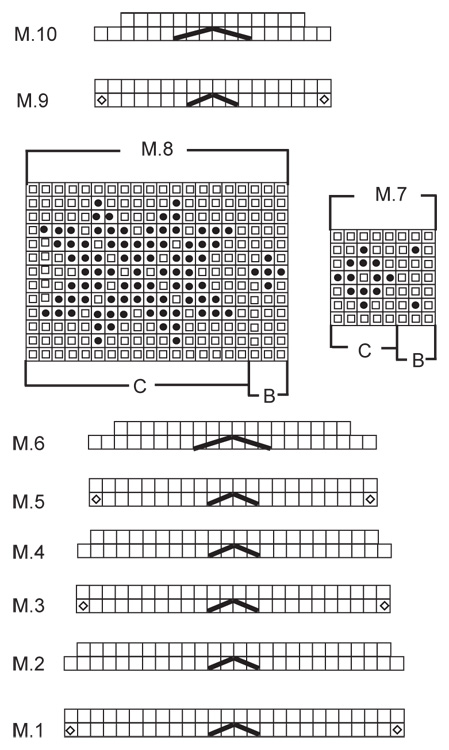
|
|||||||||||||||||||||||||
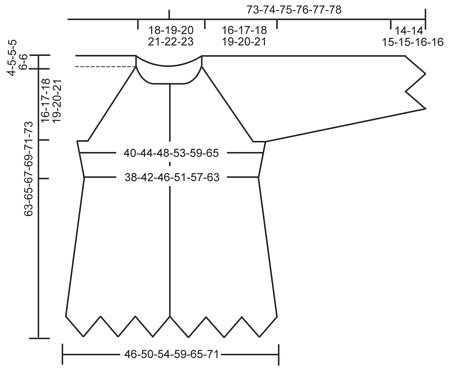
|
|||||||||||||||||||||||||
|
Have you made this or any other of our designs? Tag your pictures in social media with #dropsdesign so we can see them! Do you need help with this pattern?You'll find tutorial videos, a Comments/Questions area and more by visiting the pattern on garnstudio.com. © 1982-2024 DROPS Design A/S. We reserve all rights. This document, including all its sub-sections, has copyrights. Read more about what you can do with our patterns at the bottom of each pattern on our site. |
|||||||||||||||||||||||||










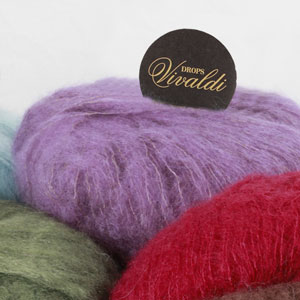









































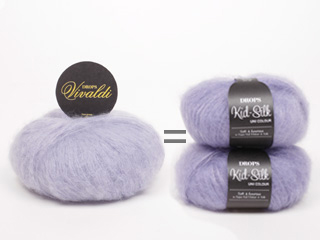














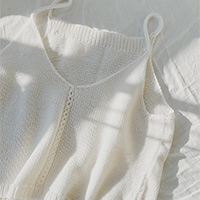





Comments / Questions (51)
I found Vivaldi 04 in a shop- and begin to knit this beautiful blue jacket - I love this pattern in blue
29.09.2015 - 12:16Welche Garnalternative gibt es zu Vivaldi 04? Oder wird diese Farbe wieder erhältlich sein?
30.05.2015 - 08:01DROPS Design answered:
Vivaldi wird komplett aus dem Programm genommen. Als gute Alternative mit einem ähnlichen Flauschcharakter eignet sich Brushed Alpaca Silk aus derselben Garngruppe. Allerdings gibt es bisher keinen dunklen Blauton, sondern nur das hellere Jeansblau. Ich würde daher auch bei Alpaca einen helleren Blauton wählen und farblich etwas "umdesignen": z.B. den Rand unten + den „Mustertrennstreifen“ in einem Dunkelblau, ebenso die Sterne des Norwegermusters, dafür den oberen Teil in einem helleren Blau/Eisblau. Letztlich ist das Geschmacksache und soll nur eine Anregung für andere Möglichkeiten sein. :-) Die Garnmenge von Brushed Alpaca Silk ist identisch mit Vivaldi.
30.05.2015 - 11:01Hallo, würde diese Jacke gern in grün Tönen stricken, würden Fabel340, brushed Alpaka Silk 15 zusammenpassen? Welche Farbe von Alpaka ( 7240,2919,6309)würde harmonieren?
29.05.2015 - 14:28DROPS Design answered:
Im Prinzip kommt es, wie oben schon angedeutet, darauf an, welche Akzente Sie setzen möchten. Ihre beiden gewünschten Farben von Fabel + Brushed Alpaca Silk passen gut zusammen. Da Sie Brushed Alpaca Silk auch bei Alpaca mitlaufen lassen, würde ich mich daran orientieren. D.h. wenn Sie für die Grundfarbe des oberen Teils eine dunklere Farbe von Alpaca wählen (6309), würde ich eher auch das dunklere Grün von Brushed Alpaca Silk nehmen (11), das passt auch zu Fabel. Wenn Sie eher hell bleiben und das Muster/die Ränder dunkel stricken wollen, nehmen Sie 6309 (dunkel) für die Ränder/Muster und viell. 2918 (wirkt statt 2919 frischer) für den oberen Teil.
30.05.2015 - 11:29Je le trouve superbe et en plus ce sont mes couleurs
14.02.2015 - 09:56Hoi Lia. Neem contact op met één van onze verkooppunten. Zij helpen u graag verder met deze soort vragen. Succes en veel breiplezier.
16.05.2011 - 12:47Considering to knit it in red with: fabel 543, vivaldi 31, baby alpaca silk red 3609 and alpaca 2923 (or 8903 black), would that work?
09.05.2011 - 14:31Roberta wrote:
[Italy] I knitted this in a heather/purple version: easy to follow pattern, very enjoyable and quick knit, great fit, light and warm - a real pleasure both to knit it and wear it!
24.06.2010 - 14:53Stunning.
14.11.2009 - 04:04Roberta, sounds like a very very nice alternative making a heather/purple version.
05.10.2009 - 18:48Roberta wrote:
What other color combinations could work well for this pattern, using Fabel 674 Heather Mix instead of 522 Turquoise/Blue Mix? Would it work with Alpaca 4440 dark purple + 3720 violet (intead of 6790 dark blue and 8105 light steel blue) and Vivaldi 32 Heather (instead of 04 steel blue)?
04.10.2009 - 08:10